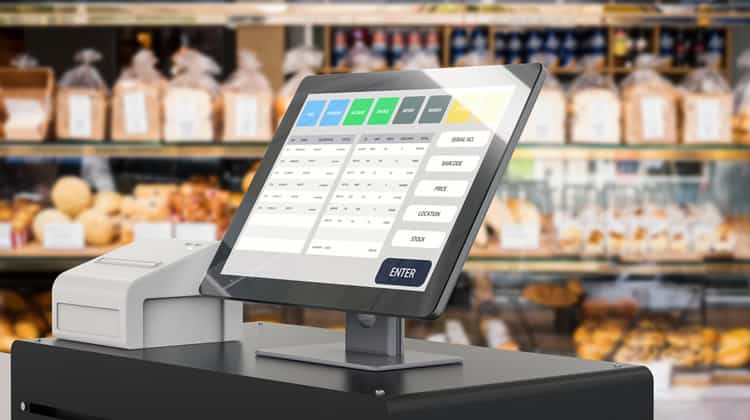Selecting a POS system and setting up your inventory management are two steps for setting up your POS system. You can find more details in this article.
Setting up a POS system isn’t as difficult as devising new talent acquiring strategies. In fact, for most small businesses, it is as easy as installing an application. If you set up a POS system for your storefront, you will need a few days for data entry, setting configuration, and hardware setup. There are also some factors that decide how you set up the POS system, and it includes system capabilities, business type and size, hardware compatibility, and budget.
How to Set Up a POS System
Setting up a POS system involves a few steps. If you want to know what they are, then read on!
#1. Select A POS System
This step is really important. After all, you would like to get a POS system that can fulfill your business needs. Also, you need to know that the POS systems operate on various types of hardware which are priced differently. So, it is essential for you to work out your budget before planning to invest in a POS system.
If you have an established business, then the chances are that you have already made investments in both hardware and software to fulfill your everyday operations. But when it comes to selecting a POS system, you would like to have one that can easily integrate with the rest of the technology that you are using. Whereas for startups, it is recommended to choose one that you are the most comfortable with.
#2. Professional Installation or DIY
Once you have chosen the POS system, the next step is to get your software and hardware up and running. The decision to either install it yourself or ask a professional to do it depends on your availability and resources. You must know that if you hire a professional, then you will have to pay for the services as well. However, if you plan to do it yourself, then you must have technical knowledge about it.
Usually, it takes a few minutes to set up a POS system. But for that, you must have the necessary hardware and tools. However, do keep in mind that custom or complicated solutions will take more expertise and time.
#3. Set Up Your Inventory Management System
After the first two steps are complete, you must now pay heed to set up your inventory management. It is highly important no matter which business you are running. For a large business, you will need to get your hands on a more sophisticated system. Also, some companies also use third-party integrations to connect their POS with inventory management software.
Now the question is, how can you set up your inventory management system? Well, the first thing you will have to do is to import your stock list. You will then have to organize your products. To do this, there are a few points that you must remember. They are as follows:
- Define the stock levels with the amount of product that you currently have
- Categorize every product by type
- Add descriptions to your products
- Include other identifying data such as barcode and vendor name
#4. Import Customer Data
After you have taken care of the inventory, the next thing you would like to do is to import your customer data. No matter if all you have is your customers’ first names, the data must be imported to your POS system. There are systems that can handle CSV or Excel Spreadsheets. You will have to update every customer profile with relevant information such as phone number, email address, and age.
Once you have done that, you would like to organize your customers. When you do this, you will easily be able to spot the frequent shoppers and top spenders. You can then organize different customers and send them personalized and targeted promotions.
#5. Set Up Employee Accounts
If you have a team or a staff, then you would like to have a POS system that allows employee permission and accounts. You can start by designating yourself as the owner or the administrator of the account. You can then think about the types of permission and employee roles that you will need. If you are running a retail shop, you may just need a manager or associate account to look after the sales and take care of the customer data. Restaurants, however, will need many different roles and permission levels for staff like managers, bartenders, and waiters.
After you are done assigning employee permissions and roles, create a separate account for them on the platform. This is important so that the workers can easily track sales and run performance reports. You will be glad to know that some of the POS systems have scheduling and time-tracking features, which you can use to know about how many hours your employee worked.
What do I need for a POS system?
What is POS configuration?
How do I get POS from my bank?
Conclusion
Setting up a POS system depends on three things: the type you are installing, the resources you have, and the needs of your business. Also, installing the POS system is simple. Therefore, you can install it yourself. But if it’s way too complicated for you, then you can always hire a professional. Moreover, you can take the aforementioned steps into account, and the process of installing a POS will become even smoother.





More Stories
Niche Domination: Finding and Profiting from Lucrative Affiliate Markets
Advantages of Hiring Professional iPhone Hacker for Your Cheating Spouse iPhone.
Exploring the Impact of the GIG Economy on the IT Industry